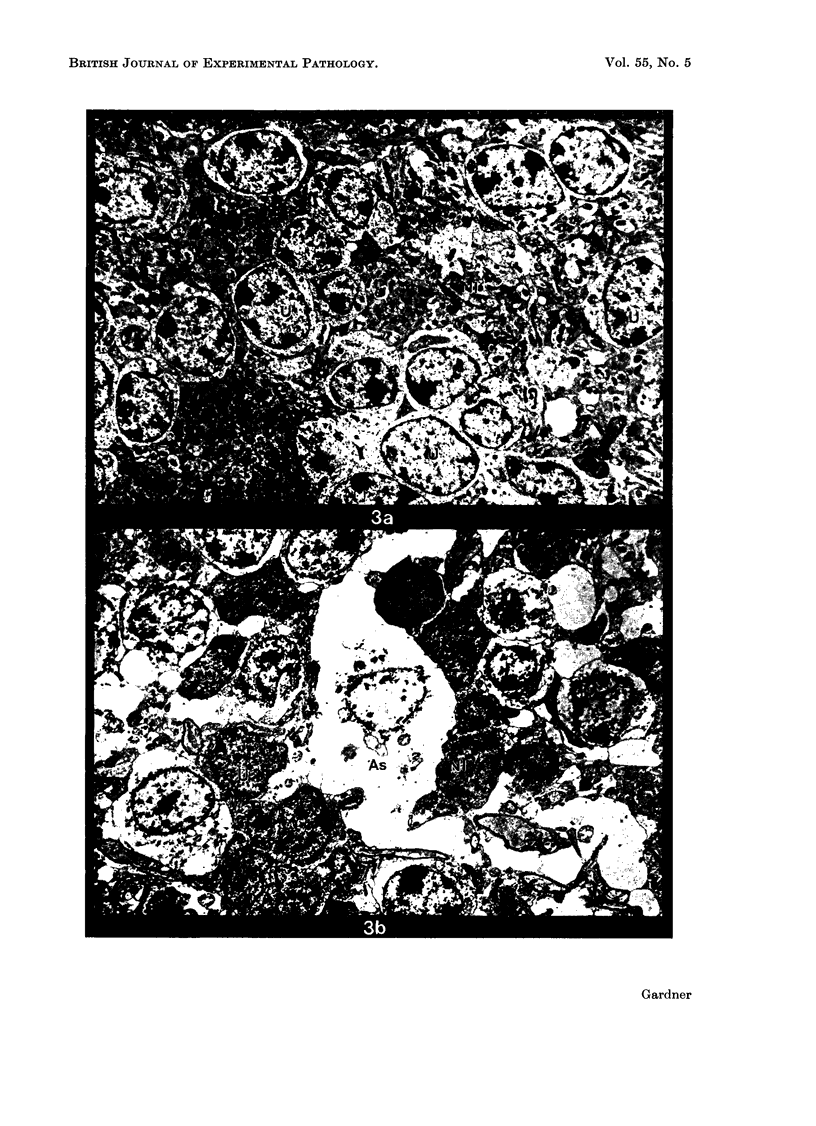Abstract
Intravenous administration of Clostridium perfringens type D episilon toxin to mice causes severe, generalized, vascular endothelial damage and progressive brain oedema. The brain oedema is revealed as a quantitive increase in the water content of brain tissue and a swelling of protoplasmic astrocytes and astrocytic processes around blood vessels and in the neuropil.
The use of horse radish peroxidase as a tracer has indicated that the endothelial damage may also allow proteins to escape from the vascular lumen into the extracellular spaces of the brain.
The suitability of Cl. perfringens type D epsilon toxin intoxication as a model for studying brain oedema and related problems is discussed.
Full text
PDF








Images in this article
Selected References
These references are in PubMed. This may not be the complete list of references from this article.
- GRINER L. A., CARLSON W. D. Enterotoxemia of sheep. II. Distribution of I-131 radioiodinated serum albumin in brains of Clostridium perfringens type D intoxicated lambs. Am J Vet Res. 1961 May;22:443–446. [PubMed] [Google Scholar]
- GRINER L. A. Enterotoxemi of sheep. I. Effects of Clostridium perfringens type D toxin on the brains of sheep and mice. Am J Vet Res. 1961 May;22:429–442. [PubMed] [Google Scholar]
- Karnovsky M. J. The ultrastructural basis of capillary permeability studied with peroxidase as a tracer. J Cell Biol. 1967 Oct;35(1):213–236. doi: 10.1083/jcb.35.1.213. [DOI] [PMC free article] [PubMed] [Google Scholar]






